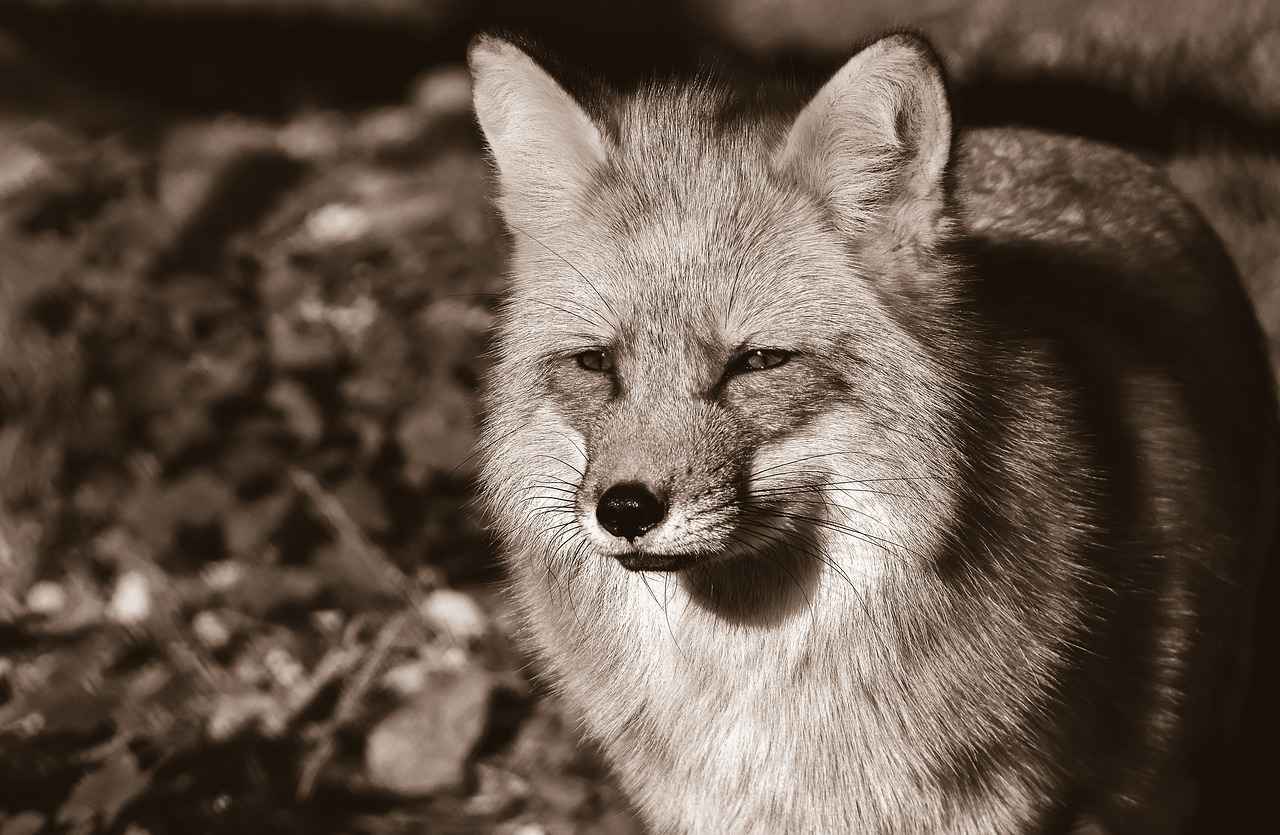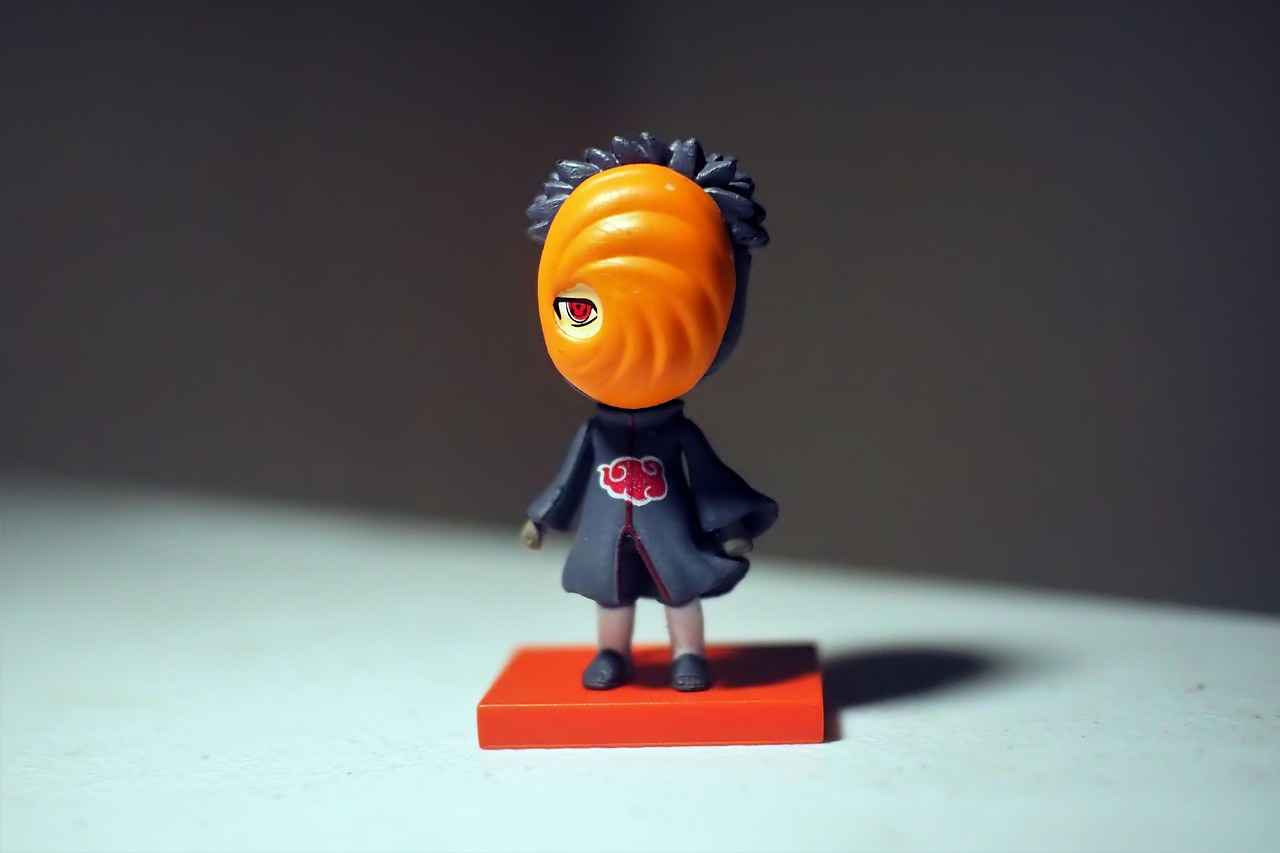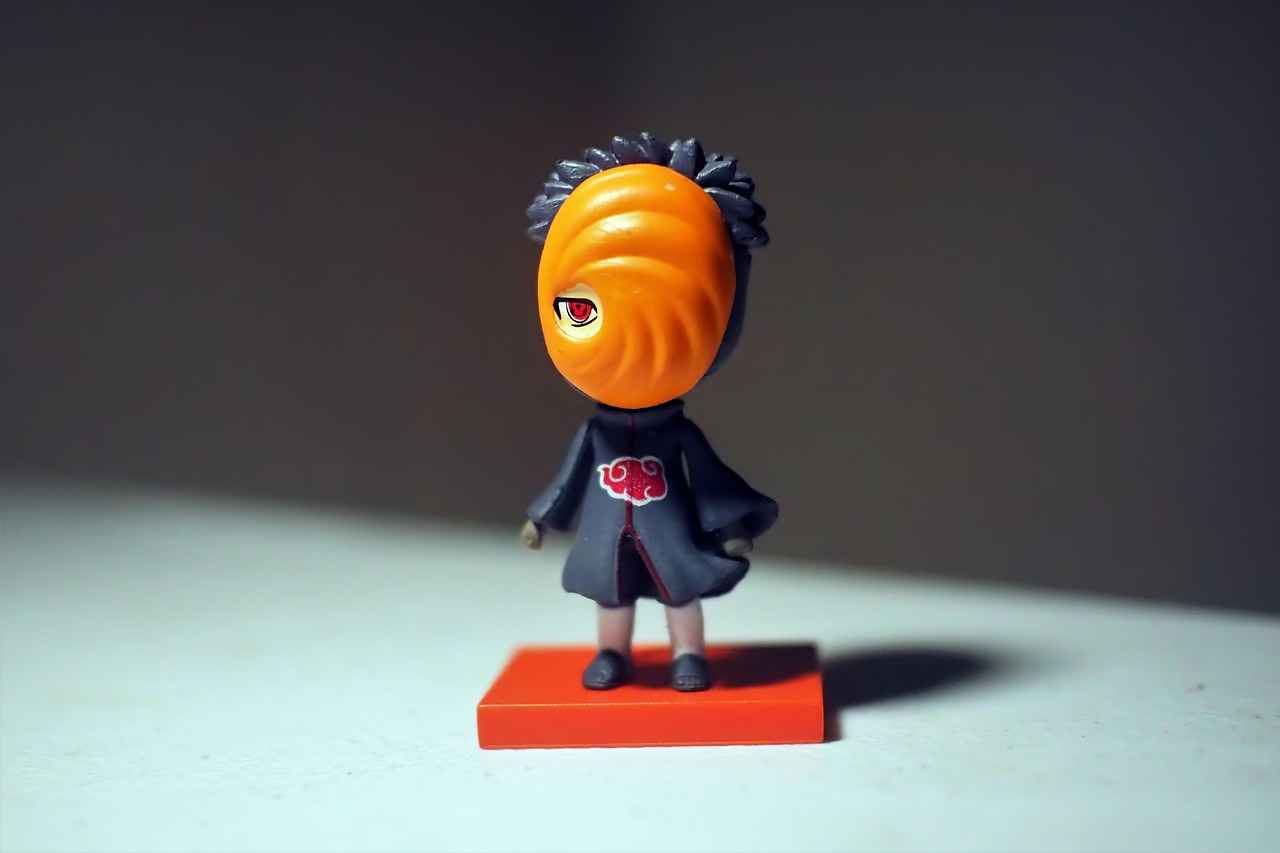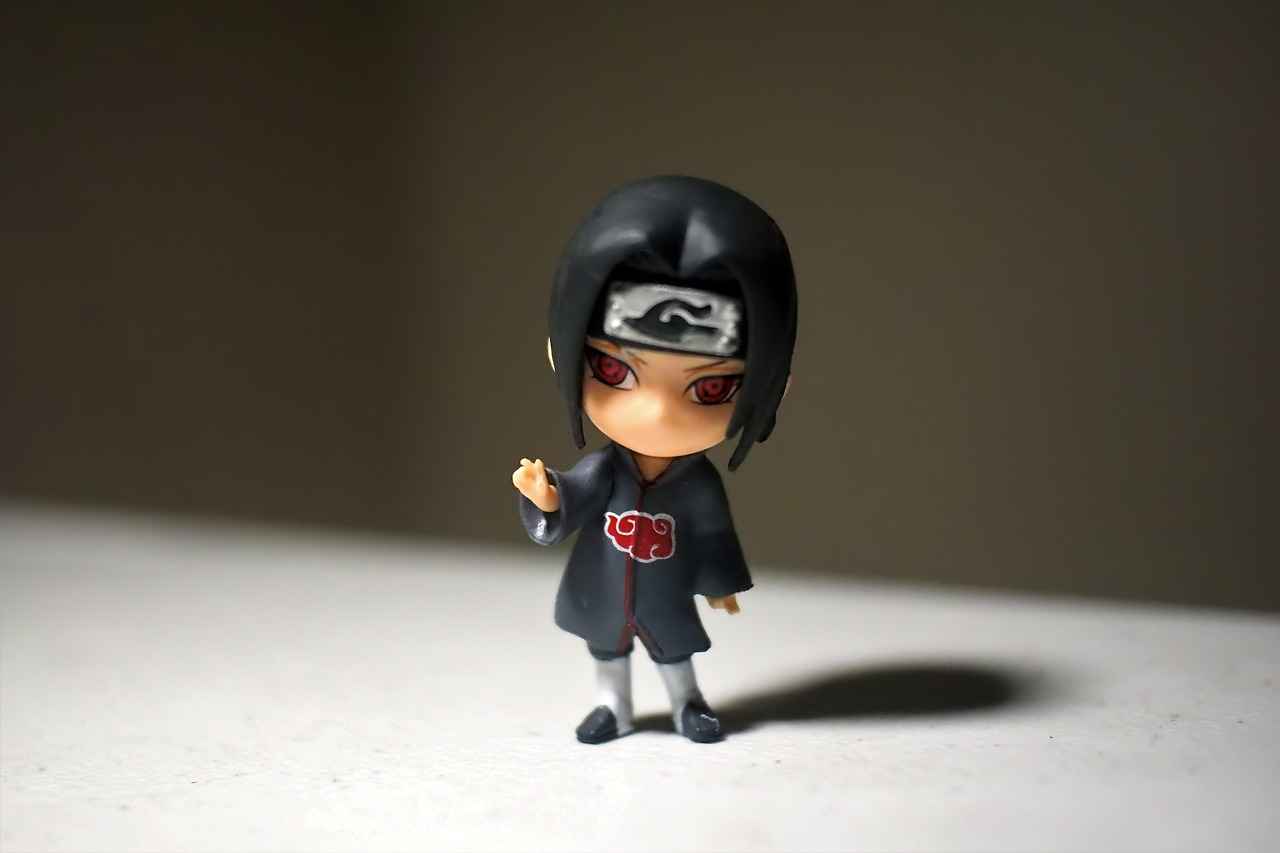This article delves into the profound significance of Kurama, the Nine-Tails Fox, within Naruto’s journey. It examines Kurama’s origins, character development, and its impact on the overarching themes of the series.
1. The Origins of Kurama in Japanese Folklore
Kurama’s character is deeply rooted in Japanese mythology, where nine-tailed foxes are often seen as symbols of both power and deception. This cultural background enriches Kurama’s portrayal in Naruto, adding layers of meaning to its narrative.
2. Kurama’s Role in Naruto’s Development
Kurama is pivotal in shaping Naruto’s character, representing his struggles and growth. Initially, Kurama embodies Naruto’s inner turmoil, but as the series progresses, it becomes a source of strength and companionship.
- 2.1. The Initial Conflict Between Naruto and Kurama
- 2.2. Understanding Naruto’s Loneliness
- 2.3. The Turning Point: Teamwork and Trust
- 2.4. The Transformation into Allies
At the beginning, Naruto and Kurama’s relationship is marked by animosity, reflecting Naruto’s challenges in learning to harness Kurama’s immense power.
Both Naruto and Kurama experience profound loneliness, creating a complex bond that evolves as they confront their shared pain and seek acceptance.
As Naruto matures, he learns to trust Kurama, representing a significant turning point in their relationship and highlighting the importance of teamwork.
Kurama’s evolution from enemy to ally illustrates themes of redemption, forgiveness, and the power of friendship.
3. Symbolism of Kurama in the Series
Kurama embodies various themes such as fear, power, and acceptance, serving as a metaphor for inner struggles and the journey toward self-discovery.
- 3.1. Fear and Misunderstanding
- 3.2. The Power of Acceptance
Initially seen as a monster, Kurama represents the fear of the unknown, reflecting societal prejudice and the importance of empathy.
Kurama’s eventual acceptance by Naruto symbolizes the transformative power of understanding and compassion.
4. Kurama’s Influence on Other Characters
Kurama’s presence significantly impacts other characters, shaping their development and highlighting the interconnectedness of their struggles.
- 4.1. Relationships with Other Tailed Beasts
- 4.2. Impact on Naruto’s Friends and Rivals
Kurama’s interactions with other Tailed Beasts reveal deeper insights into their shared experiences and the importance of cooperation.
Kurama’s influence extends to Naruto’s friends and rivals, affecting their growth and emphasizing the ripple effect of personal struggles.
5. The Legacy of Kurama in the Naruto Franchise
Kurama’s legacy continues to resonate throughout the Naruto franchise, influencing subsequent stories and characters, solidifying its place as an iconic symbol.
- 5.1. Kurama’s Role in Boruto: Next Generations
- 5.2. Merchandise and Cultural Impact
In the sequel series, Boruto, Kurama’s legacy shapes the next generation, showcasing how past struggles inform future challenges.
Kurama’s popularity has led to extensive merchandise and cultural references, reflecting its significant impact on fans.
6. Conclusion: The Enduring Impact of Kurama
Kurama’s character transcends Naruto’s narrative, embodying universal themes of struggle, acceptance, and the transformative power of relationships, leaving a lasting legacy in the hearts of fans.

1. The Origins of Kurama in Japanese Folklore
The Origins of Kurama in Japanese Folklore
Kurama, the Nine-Tails Fox, is a character deeply embedded in Japanese mythology, where nine-tailed foxes, or “Kitsune,” are often depicted as powerful and mystical beings. In folklore, these creatures are known for their ability to shape-shift and possess both benevolent and malevolent qualities. This duality of nature enriches Kurama’s character in the Naruto series, adding layers of complexity to its narrative.
Historically, nine-tailed foxes symbolize deception and wisdom, often serving as messengers between the spirit world and humans. They are revered for their intelligence and magical abilities, which can be both a source of strength and a cause for mischief. This cultural background influences Kurama’s portrayal, making it a significant figure not just as a source of power for Naruto, but also as a representation of the struggles that come with such power.
In the early episodes of Naruto, Kurama is introduced as a fearsome beast, embodying the fear and misunderstanding that often accompany the unknown. This initial representation aligns with traditional tales where Kitsune are feared for their unpredictable nature. However, as the story progresses, Kurama’s character evolves, reflecting the deeper themes of redemption and acceptance.
Moreover, Kurama’s connection to Naruto serves as a metaphor for the inner battles faced by individuals. Just as the nine-tailed fox is often portrayed as both a guardian and a trickster, Kurama embodies the complexities of friendship and the journey toward self-acceptance. This transformation from adversary to ally is not only pivotal in Naruto’s growth but also highlights the rich tapestry of cultural narratives that inform the series.
In conclusion, Kurama’s roots in Japanese folklore enhance its role in Naruto, providing a rich cultural backdrop that deepens the audience’s understanding of the character and its significance within the overarching narrative.

2. Kurama’s Role in Naruto’s Development
Kurama’s Role in Naruto’s Development
Kurama, the Nine-Tails Fox, is not just a beast sealed within Naruto; he is a crucial element in Naruto’s personal growth and development throughout the series. Their relationship evolves from one of animosity to a profound bond, illustrating the complexities of trust, teamwork, and emotional healing.
- Initial Conflict: At the beginning of the series, Naruto struggles with the presence of Kurama within him. This relationship is marked by resentment and fear, as Kurama is often viewed as a monster, both by Naruto and the villagers. This animosity reflects Naruto’s own internal conflicts and loneliness.
- Shared Loneliness: Both Naruto and Kurama experience profound loneliness. Naruto’s isolation as a child mirrors Kurama’s own suffering, which leads to a unique bond. Their journey together is a testament to how understanding and empathy can transform relationships.
- Turning Point: As Naruto matures, he begins to trust Kurama, marking a significant change in their dynamic. This trust signifies a shift from viewing Kurama solely as a source of power to recognizing him as a valuable ally and friend.
- Transformation into Allies: The evolution from enemy to ally showcases themes of redemption and forgiveness. Kurama’s acceptance of Naruto’s companionship highlights the importance of friendship and cooperation in overcoming challenges.
Through Kurama, Naruto learns to harness immense power responsibly, ultimately using it to protect his friends and village. This growth emphasizes the series’ core themes of self-discovery and personal evolution, as both characters learn to embrace their identities and strengths together.
In conclusion, Kurama is more than just a powerful creature; he is a symbol of growth, resilience, and the transformative power of companionship. Their journey together not only shapes Naruto’s character but also serves as a profound narrative of healing and acceptance.
2.1. The Initial Conflict Between Naruto and Kurama
The Initial Conflict Between Naruto and Kurama
The relationship between Naruto Uzumaki and Kurama, the Nine-Tails Fox, begins on a tumultuous note, marked by deep-seated animosity and misunderstanding. This early conflict serves as a critical backdrop for Naruto’s character development and the overarching themes of the series.
Initially, Naruto is burdened by the stigma of being a host for Kurama, leading to his alienation from the villagers of Konoha. This isolation mirrors Kurama’s own suffering, having been sealed away and viewed as a monster. Both characters, trapped in their respective loneliness, struggle to find acceptance and understanding. This duality of pain creates a complex bond, where Naruto’s quest for recognition clashes with Kurama’s instinctual desire for freedom and revenge.
As Naruto grapples with his emotions, he often exhibits feelings of anger and frustration towards Kurama. This animosity is not just a reflection of Naruto’s inner turmoil but also represents the broader theme of fear of the unknown. The villagers’ fear of Kurama, projected onto Naruto, creates a cycle of misunderstanding that complicates their relationship. The Nine-Tails, initially seen as a malevolent force, embodies the societal prejudice that Naruto must confront.
However, beneath the surface of their conflict lies the potential for growth and transformation. As the series progresses, Naruto’s determination to overcome his hardships becomes a catalyst for change. He begins to understand that Kurama is not merely a monster but a being with its own pain and history. This realization marks the beginning of a journey towards mutual respect and collaboration.
Ultimately, the initial conflict between Naruto and Kurama sets the stage for a profound evolution in their relationship. It highlights the importance of trust and teamwork in overcoming adversity, illustrating that even the deepest animosities can transform into powerful alliances when approached with empathy and understanding.
2.1.1. Understanding Naruto’s Loneliness
Understanding Naruto’s Loneliness
Naruto Uzumaki’s journey is one of profound emotional depth, reflecting a struggle that resonates with many. From a young age, he experienced isolation and rejection from his peers, largely due to the presence of Kurama, the Nine-Tails Fox, sealed within him. This forced separation created a sense of alienation that shaped Naruto’s character and his quest for acceptance.
His loneliness is not merely a backdrop; it is a catalyst for his growth. As a child, Naruto longed for recognition and companionship, feelings that were exacerbated by the fear and prejudice the villagers held towards him. This shared pain between Naruto and Kurama is pivotal, as both characters grapple with their identities and the stigma surrounding them. Kurama, too, is a victim of misunderstanding, having been viewed as a monster rather than a being capable of connection.
Through their evolving relationship, Naruto learns to confront his loneliness. Initially, he perceives Kurama as an enemy, embodying the very source of his suffering. However, as Naruto matures, he begins to understand that their fates are intertwined. This realization leads to a transformative bond where Naruto starts to view Kurama not just as a burden but as a potential ally. Their journey together symbolizes the importance of empathy and understanding in overcoming personal and societal barriers.
As Naruto embraces his loneliness, he also learns the value of friendship and trust. This transformation is crucial in his character arc, showcasing how he turns his greatest source of pain into a source of strength. Ultimately, Naruto’s ability to confront his feelings of isolation allows him to forge a deep connection with Kurama, illustrating that acceptance and understanding can lead to powerful alliances.
In conclusion, Naruto’s loneliness is a central theme that not only shapes his character but also enriches the narrative of the series. It serves as a reminder that even in our darkest moments, the potential for connection and growth exists.
2.1.2. The Turning Point: Teamwork and Trust
The Turning Point: Teamwork and Trust
In the journey of Naruto Uzumaki, the relationship he shares with Kurama, the Nine-Tails Fox, evolves profoundly, highlighting the significance of teamwork and trust. Initially, their bond is characterized by animosity and fear, as Naruto struggles to control the immense power Kurama possesses. This conflict symbolizes Naruto’s inner turmoil and his quest for identity and acceptance.
As Naruto matures, he begins to recognize that Kurama is not merely a source of power, but a being with its own feelings and history. This realization marks a crucial turning point in their relationship. The moment Naruto chooses to trust Kurama signifies a shift from viewing him as an adversary to seeing him as an ally. This transition is pivotal, as it emphasizes the importance of understanding and empathy in overcoming challenges.
Throughout their struggles, Naruto learns that collaboration and communication are essential in harnessing Kurama’s strength. The duo’s journey together showcases how mutual respect and understanding can transform enmity into a powerful partnership. As they face formidable foes, their bond strengthens, illustrating that true strength often lies in unity.
Moreover, this evolving relationship serves as a metaphor for personal growth. It teaches valuable lessons about accepting one’s flaws and the necessity of relying on others. In a world filled with adversity, Naruto and Kurama’s alliance exemplifies how teamwork can lead to greater achievements, ultimately allowing them to overcome the odds stacked against them.
In conclusion, the turning point in Naruto’s relationship with Kurama not only enhances their character arcs but also reinforces the series’ core themes of trust, teamwork, and understanding. Their journey together inspires viewers to embrace collaboration in their own lives, proving that even the most unlikely partnerships can lead to extraordinary outcomes.
2.2. The Transformation into Allies
The Transformation into Allies is a pivotal moment in Naruto’s narrative, encapsulating the profound journey of Kurama, the Nine-Tails Fox. Initially introduced as a formidable adversary, Kurama’s evolution into a trusted ally illustrates significant themes of redemption, forgiveness, and the transformative power of friendship.
At the outset, Naruto and Kurama’s relationship is characterized by conflict and misunderstanding. Kurama, fueled by resentment and pain from his past, embodies the darkness within Naruto. This conflict highlights Naruto’s own struggles with loneliness and rejection, as both characters are shaped by their traumatic experiences. However, as the story progresses, Naruto learns to embrace Kurama’s power, viewing him not merely as a source of strength but as a companion. This shift marks a crucial turning point in their relationship.
Through a series of trials, Naruto demonstrates unwavering determination to connect with Kurama. Their bond deepens as they face external threats together, showcasing the importance of teamwork and trust. Naruto’s ability to see beyond Kurama’s monstrous exterior allows for a deeper understanding, fostering an environment where both characters can heal and grow. This transformation is not just about Naruto gaining power; it signifies a mutual journey towards acceptance and understanding.
As they unite against formidable foes, Kurama begins to shed his past grudges, recognizing Naruto’s genuine intentions. This redemptive arc serves as a powerful reminder of how empathy and compassion can bridge divides, turning former enemies into steadfast allies. The culmination of their relationship is a testament to the strength found in friendship, emphasizing that even the most troubled beings can find solace and purpose through connection.
In conclusion, the transformation of Kurama from a feared enemy to a loyal ally is a central theme in Naruto. It illustrates the profound impact of forgiveness and the healing power of friendship, resonating deeply with audiences and enriching the overall narrative.

3. Symbolism of Kurama in the Series
Kurama, the Nine-Tails Fox, serves as a profound symbol within the Naruto series, embodying a multitude of themes that resonate deeply with viewers. Its character arc reflects the complexities of fear, power, and acceptance, making it a rich metaphor for the inner struggles faced by individuals on their journey toward self-discovery and harmony.
- Fear and Misunderstanding: Initially, Kurama is perceived as a terrifying monster, representing the fear of the unknown. This fear is not just directed at Kurama but also reflects societal prejudices against those who are different. The early portrayal of Kurama highlights how misunderstanding can lead to conflict, urging viewers to embrace empathy and challenge their own biases.
- The Power of Acceptance: As the narrative unfolds, Kurama’s relationship with Naruto evolves, symbolizing the transformative power of acceptance. When Naruto chooses to accept Kurama as part of himself, it signifies a major turning point, illustrating how embracing one’s flaws can foster personal growth and stronger connections with others.
Through Kurama, the series emphasizes that inner struggles are universal, and the journey toward self-acceptance is often fraught with challenges. The character serves as a reminder that true strength lies not in isolation but in the ability to forge bonds with others, even those who may seem like adversaries at first.
In conclusion, Kurama’s symbolism extends beyond the confines of the Naruto universe, resonating with audiences by highlighting the importance of overcoming fear and misunderstanding. It encourages a dialogue about acceptance, ultimately fostering a deeper understanding of oneself and others.
3.1. Fear and Misunderstanding
Fear and Misunderstanding are common themes that resonate throughout many stories, and in the world of Naruto, Kurama, the Nine-Tails Fox, embodies these concepts profoundly. Initially viewed as a monstrous entity, Kurama’s character arc reflects the deep-seated fears and prejudices that can arise from misunderstanding the unknown.
In the series, Kurama is introduced as a fearsome beast, a creature that brings destruction and chaos. This perception stems from societal prejudices against those who are different or misunderstood. Kurama’s initial role as an antagonist serves to illustrate the fear of the unknown, a theme that resonates with both Naruto and the audience. Much like how society often demonizes what it does not understand, Kurama’s portrayal invites viewers to reflect on their own biases and the importance of empathy.
| Theme | Description |
|---|---|
| Fear | Represents the instinctual reaction to what is perceived as a threat. |
| Misunderstanding | Highlights the consequences of judging based on appearances and preconceived notions. |
As the story progresses, Naruto’s journey showcases the transformative power of understanding and empathy. By learning to communicate and trust Kurama, Naruto begins to dismantle the barriers of fear and prejudice. This relationship evolves into a powerful partnership that symbolizes how overcoming personal and societal fears can lead to profound growth and connection.
Ultimately, Kurama’s character serves as a reminder that compassion and understanding are essential in overcoming misconceptions. By confronting fear with empathy, both Naruto and Kurama demonstrate that true strength lies not in power or dominance, but in the ability to forge connections and embrace differences.
In conclusion, the story of Kurama in Naruto encourages viewers to challenge their own fears and prejudices, promoting a message of acceptance and understanding in a world often filled with misunderstanding.
3.2. The Power of Acceptance
The Power of Acceptance is a profound theme explored in the Naruto series, particularly through the relationship between Naruto Uzumaki and Kurama, the Nine-Tails Fox. This dynamic not only highlights personal growth but also emphasizes the importance of empathy and understanding in overcoming adversity.
Initially, Kurama is seen as a formidable adversary, representing the fear and misunderstanding that often accompany the unknown. Naruto, burdened by his status as a jinchuriki, struggles with feelings of loneliness and isolation, mirroring Kurama’s own tragic past. As the story unfolds, both characters begin to confront their shared pain, leading to a transformative journey of acceptance.
Through their evolving relationship, Naruto learns to embrace Kurama’s power, not as a curse but as a source of strength. This acceptance is pivotal; it symbolizes the idea that recognizing and embracing one’s flaws can foster personal growth. By choosing to understand Kurama rather than fear him, Naruto demonstrates the transformative power of compassion and forgiveness.
The turning point in their relationship occurs when Naruto begins to trust Kurama. This trust lays the groundwork for a powerful alliance, showcasing how teamwork and mutual respect can lead to overcoming significant challenges. As they unite their strengths, they become a formidable force against external threats, illustrating the impact of collaboration and understanding in achieving greater goals.
Ultimately, Kurama’s acceptance by Naruto serves as a powerful metaphor for the journey toward self-discovery and harmony. It underscores the idea that true strength lies not in the absence of flaws but in the ability to acknowledge and embrace them. This theme resonates deeply with fans, illustrating that personal growth often stems from the bonds we forge with others.
In conclusion, the relationship between Naruto and Kurama exemplifies the power of acceptance. Their journey from animosity to understanding highlights the significance of empathy in overcoming personal and societal struggles, leaving a lasting impact on the narrative of Naruto and its audience.

4. Kurama’s Influence on Other Characters
Kurama’s Influence on Other Characters
In the rich tapestry of the Naruto universe, Kurama, the Nine-Tails Fox, serves as a pivotal force that shapes the development of numerous characters. His presence not only influences Naruto but also extends to his friends, rivals, and even other Tailed Beasts, illustrating the profound interconnectedness of their journeys.
| Character | Impact of Kurama |
|---|---|
| Naruto Uzumaki | Kurama helps Naruto harness his potential, transforming him from an outcast to a hero. |
| Sasuke Uchiha | Kurama’s influence encourages Sasuke to confront his own demons and seek redemption. |
| Sakura Haruno | Through Naruto’s growth with Kurama, Sakura learns the value of teamwork and resilience. |
| Other Tailed Beasts | Kurama fosters a sense of unity among the Tailed Beasts, promoting cooperation and understanding. |
Kurama’s relationship with Naruto serves as a catalyst for growth, demonstrating how personal struggles can lead to collective progress. As Naruto learns to embrace Kurama, he also inspires his friends to confront their own challenges. This dynamic emphasizes the importance of trust and collaboration in overcoming obstacles.
Moreover, Kurama’s interactions with other Tailed Beasts reveal shared experiences of pain and isolation, ultimately highlighting themes of redemption and forgiveness. These relationships not only deepen the narrative but also showcase how interconnected their struggles are.
In conclusion, Kurama’s influence extends far beyond his role as a mere beast; he is a symbol of transformation and connection, reminding us that the journey of one can resonate with many, fostering growth and understanding in a world often marked by conflict.
4.1. Relationships with Other Tailed Beasts
Relationships with Other Tailed Beasts
Kurama’s interactions with the other Tailed Beasts provide profound insights into their shared experiences, which ultimately highlight the themes of unity and the necessity of cooperation when facing common challenges. Each Tailed Beast, while unique in their characteristics and abilities, shares a common bond rooted in their pasts, often marked by isolation and misunderstanding.
- The Shared Burden of Sealing: All Tailed Beasts have faced the burden of being sealed within human hosts, which has led to feelings of resentment and anger. Kurama, as the most powerful of them, often finds himself at the center of these emotions, yet through his interactions, he learns the importance of empathy and understanding.
- Forging Alliances: During pivotal battles, Kurama collaborates with other Tailed Beasts, demonstrating how their combined strengths can overcome formidable foes. This cooperation is a testament to their growth, as they move from being adversaries to allies.
- Understanding and Acceptance: As Kurama interacts with other Tailed Beasts, he begins to understand their struggles and pain. This mutual understanding fosters a sense of camaraderie, which is essential for their collective survival. Kurama’s journey from animosity to acceptance serves as a model for how unity can be achieved through shared experiences.
Ultimately, Kurama’s relationships with other Tailed Beasts illustrate that despite their differences, they are bound by their shared histories and challenges. Their evolution from isolation to collaboration emphasizes the significance of working together to confront the obstacles they face. This theme resonates not only within the narrative of Naruto but also serves as a broader metaphor for the importance of unity in overcoming life’s challenges.
4.2. Impact on Naruto’s Friends and Rivals
Impact on Naruto’s Friends and Rivals
Kurama, the Nine-Tails Fox, serves as a profound catalyst for change, not just within Naruto but also among his friends and rivals. The interconnectedness of their journeys emphasizes how personal struggles can ripple through relationships, shaping perspectives and growth.
Initially, many of Naruto’s friends and rivals view him with skepticism and fear due to the presence of Kurama. This fear often stems from the mythology surrounding the Tailed Beasts and their historical implications in the ninja world. However, as Naruto learns to embrace Kurama’s power and transform it into a source of strength, it influences those around him.
- Sasuke Uchiha: Sasuke’s rivalry with Naruto is deeply rooted in their contrasting approaches to power. Kurama’s evolution into a trusted ally for Naruto highlights the importance of trust and teamwork, encouraging Sasuke to reconsider his own path. Over time, their relationship evolves, showcasing how mutual struggles can lead to understanding and camaraderie.
- Sakura Haruno: Sakura’s growth is significantly impacted by Naruto’s journey with Kurama. Witnessing Naruto’s transformation inspires her to confront her own insecurities and strive for greater strength. Kurama’s influence encourages her to embrace her vulnerabilities, thus fostering a more profound bond with Naruto.
- Hinata Hyuga: Hinata’s admiration for Naruto also reflects Kurama’s impact. As she observes Naruto’s determination to harness Kurama’s power, she gains confidence in her abilities, ultimately leading to her own character development and a stronger relationship with Naruto.
Moreover, Kurama’s interactions with other characters, such as Gaara, further illustrate the theme of redemption and healing. Gaara, once consumed by loneliness and pain, finds solace in Naruto’s journey, which is intrinsically tied to Kurama. This connection fosters a sense of unity among them, demonstrating that personal struggles can create bonds that transcend rivalry.
In conclusion, Kurama’s influence extends far beyond Naruto, affecting the growth and perspectives of his friends and rivals. This ripple effect emphasizes the importance of understanding and empathy in overcoming personal and collective challenges, ultimately reinforcing the series’ overarching themes of friendship and resilience.

5. The Legacy of Kurama in the Naruto Franchise
Kurama, the Nine-Tails Fox, is not just a character within the Naruto series; he is a pivotal element that has left an indelible mark on the franchise as a whole. His legacy continues to resonate through various narratives, influencing subsequent stories and characters, thereby solidifying his status as an iconic symbol of the series.
One of the most significant aspects of Kurama’s legacy is how it shapes the themes of redemption and friendship. Initially portrayed as a malevolent force, Kurama undergoes a profound transformation that reflects the series’ overarching message about the potential for change and understanding. This evolution not only enriches Naruto’s character arc but also serves as a template for other characters in the series, showcasing how overcoming adversity can lead to meaningful connections.
Moreover, Kurama’s influence extends beyond the original series into the sequel, Boruto: Next Generations. In this continuation, Kurama’s legacy is evident as new characters grapple with the repercussions of past conflicts and the enduring lessons learned from their predecessors. This connection to Kurama emphasizes the idea that the struggles faced by one generation can inform and guide the next, reinforcing the narrative’s depth.
Additionally, Kurama’s popularity has permeated various forms of merchandise, from action figures to clothing, further showcasing his cultural impact. His image has become synonymous with the Naruto brand, appealing to a diverse audience and fostering a sense of community among fans. This commercial success speaks to the character’s resonance and the emotional connections that fans have developed over the years.
In conclusion, Kurama’s legacy is multifaceted, encompassing themes of growth, acceptance, and the power of relationships. His journey from a feared beast to a beloved ally serves as a powerful reminder of the transformative potential within us all. As the Naruto franchise continues to evolve, Kurama’s impact will undoubtedly remain a cornerstone of its narrative, inspiring future generations of fans.
5.1. Kurama’s Role in Boruto: Next Generations
Kurama’s Role in Boruto: Next Generations
In the sequel series Boruto: Naruto Next Generations, the legacy of Kurama, the Nine-Tails Fox, continues to resonate profoundly, shaping the experiences and growth of the new generation of ninja. This legacy not only highlights the enduring impact of past struggles but also emphasizes the ongoing journey of self-discovery for characters who are influenced by Naruto’s history.
As the series progresses, Boruto Uzumaki, Naruto’s son, grapples with the weight of his father’s legacy, including the challenges posed by Kurama’s existence. The relationship between Boruto and Naruto is pivotal as it reflects the struggles faced by their predecessors. Boruto’s journey is marked by the desire to forge his own identity, distinct from that of his father, while still being influenced by the lessons learned from Kurama’s past.
| Key Themes in Boruto | Description |
|---|---|
| Identity | Exploration of self amidst familial expectations. |
| Legacy | How past experiences shape future generations. |
| Friendship | Building bonds despite inherited struggles. |
Moreover, Kurama’s legacy serves as a reminder of the importance of understanding and acceptance. Characters such as Sarada Uchiha and Mitsuki also reflect on their own paths, drawing inspiration from the trials and triumphs of Naruto and Kurama. This interconnectedness illustrates how the past informs the present, urging the new generation to confront their own challenges with resilience.
In conclusion, Kurama’s influence in Boruto is not merely a remnant of Naruto’s past but a dynamic force that encourages the next generation to embrace their identities while learning from the experiences of those who came before them. This ongoing journey of self-discovery is essential for their growth as individuals and as a collective.
5.2. Merchandise and Cultural Impact
Merchandise and Cultural Impact of Kurama
Kurama, the Nine-Tails Fox from the Naruto series, has become a cultural phenomenon, transcending the boundaries of the anime community. Its popularity has led to an extensive range of merchandise, including toys, clothing, and collectibles, appealing to both fans of the series and new audiences alike.
| Type of Merchandise | Description |
|---|---|
| Action Figures | Highly detailed figures that capture Kurama’s fierce appearance and abilities. |
| Clothing | T-shirts, hoodies, and accessories featuring Kurama’s iconic design. |
| Art Books | Books showcasing artwork and illustrations of Kurama and other characters. |
| Video Games | Games that feature Kurama as a playable character or a key element of the story. |
Moreover, Kurama’s influence extends beyond merchandise. The character is frequently referenced in various forms of media, including memes, fan art, and even academic discussions about anime and its cultural significance. This cultural impact highlights how Kurama resonates with fans, embodying themes of struggle, redemption, and the duality of power.
- Fan Art: Artists around the world create stunning interpretations of Kurama, showcasing their creativity and love for the character.
- Memes: Kurama’s expressions and quotes have become popular in meme culture, allowing fans to share relatable experiences.
- Conventions: Kurama is often featured in cosplay at anime conventions, where fans celebrate their favorite characters.
In conclusion, Kurama’s merchandise and cultural references reflect its significant impact not only on fans but also on the broader anime community. As the character continues to inspire new generations, its legacy remains strong, solidifying its place in the hearts of many.

6. Conclusion: The Enduring Impact of Kurama
Kurama, the Nine-Tails Fox, is not just a character within the Naruto series; he represents a journey of transformation and understanding that resonates with audiences around the world. His character arc showcases the evolution from a feared entity to a beloved ally, embodying the universal themes of struggle, acceptance, and the profound impact of relationships.
Throughout the series, Kurama’s initial portrayal as a menacing beast highlights the fear and misunderstanding often associated with the unknown. This reflects broader societal issues where individuals are judged based on their appearances or past actions. As Naruto learns to embrace Kurama, the narrative shifts to emphasize the importance of empathy and compassion, illustrating how these qualities can lead to personal growth and stronger connections.
Moreover, Kurama’s legacy extends beyond Naruto, influencing the development of other characters and the overarching themes of friendship and unity. His interactions with other Tailed Beasts and Naruto’s friends demonstrate the interconnectedness of their struggles, reinforcing the idea that overcoming adversity is often a collective effort.
As the Naruto franchise continues to evolve, particularly in the sequel series Boruto, Kurama’s influence remains palpable. His character serves as a reminder of the lessons learned and the challenges faced, ensuring that the journey of self-discovery and acceptance continues for future generations.
In conclusion, Kurama’s character transcends the narrative of Naruto, leaving a lasting legacy in the hearts of fans. His story is a powerful testament to the transformative power of relationships and the enduring impact of understanding and acceptance in overcoming life’s challenges.
